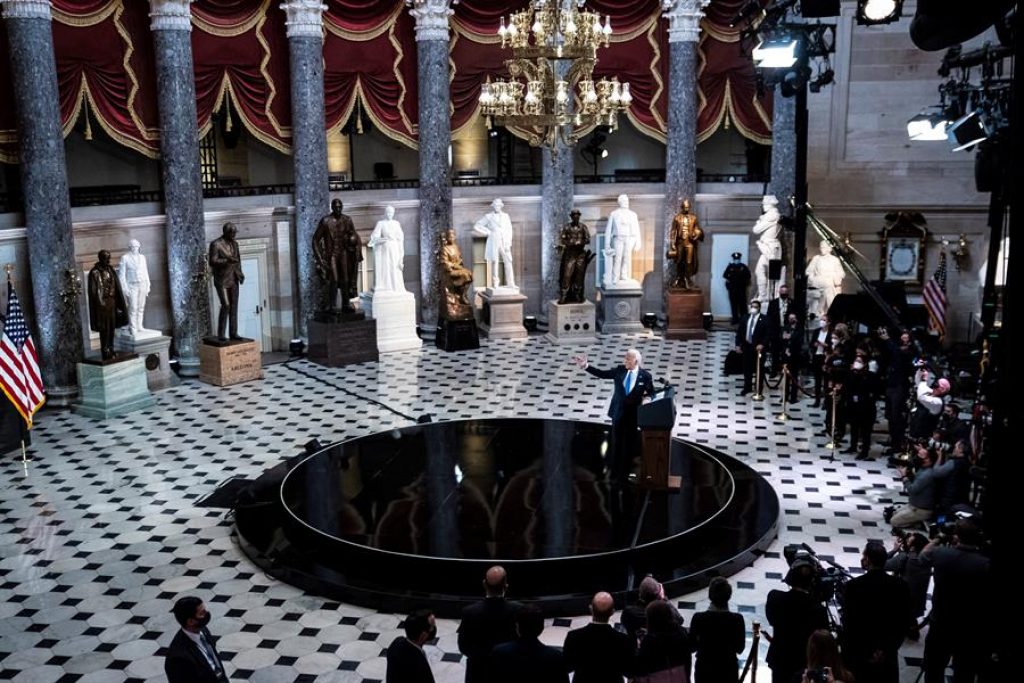President Joe Biden chose the symbolic Capitol Hall of Statues on Thursday to commemorate the assault a year ago on the headquarters of Congress by a mob of supporters of his predecessor Donald Trump.
It is an unprecedented election since it is the first time that a president of the country has delivered a speech to the nation from this place, although other presidents have spoken at funerals and other events held here.
Surrounded by 35 statues representing some of the 50 states (two figures per state), Biden lashed out at Trump, whom he called a liar, for the assault on the Capitol.
Just a year ago, hundreds of supporters of the former president stormed this and other rooms of the compound, where a joint session of the two houses of Congress was held to ratify Biden’s victory in the 2020 elections.
The hall was created in 1807 but destroyed when British troops burned the Capitol building in 1814.
Between 1815 and 1819, this room, one of the most visited by tourists, was rebuilt and even served as a chamber for the Lower House until it was converted into a kind of art gallery.
During the time it served as the chamber here, Presidents James Madison, James Monroe, John Quincy Adams, Andrew Jackson, and Millard Fillmore were sworn in.
In 1864, Congress invited each state to send two statues of its prominent citizens to permanently adorn the room, and it was that year that it was christened the National Statues Hall.
In total there are 100 figures representing the 50 states (two per state): as there were many, the statues have been distributed in other parts of the building and 35 are currently displayed in that room.
As a curiosity, one of the sculptures in the room is that of a Spanish missionary, Friar Junípero Serra, sent by the state of California.
Serra was the creator of the mission system and long considered the founding father of California, although his figure is increasingly controversial in the United States, where some see him as a symbol of an invasion that brought death, disease, and oppression to the natives who had inhabited California for centuries before the arrival of the Spanish.
